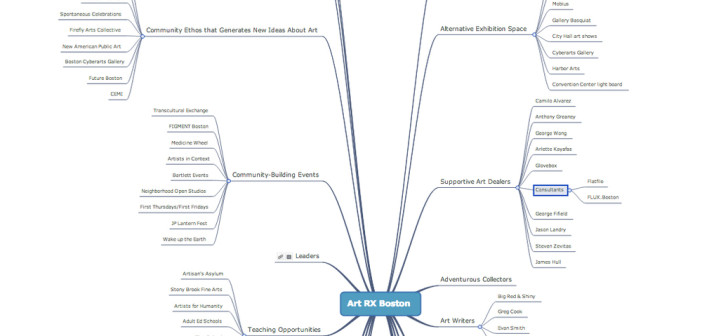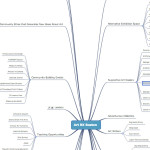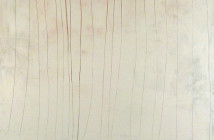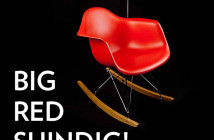Wednesday, we published a piece titled "Prescription for a Healthy Art Scene" and invited readers to think about where they fit in the ecosystem, and speak up about how they see themselves contributing to it.
Among all the interesting insights we received came a gift from Jason Turgeon. Jason used the points on Pritikin's list to generate an interactive, crowd-sourced map of Greater Boston's art scene. By clicking on any of the expanding categories, you reveal the rhizome of groups, individuals, projects, and places that constitute our city. What's more, Jason has extended an invitation to anyone who wishes to add to the map.
The mind-map is nowhere near complete, and is biased towards the place I live and the organizations I'm involved with. But it is a good start towards showing all the amazing things we have in Boston, and the places where we are lacking support. If anyone wants to help me flesh it out, hit me up at @bartlettevents, www.bartlettevents.com, or on Facebookand I will give you access to it.
Even at this early stage, we can see some weak points: audience and collectors being the two glaring ones.
Ron Mallis, who also commented on the article, has been spearheading efforts to increase exchange and conversation among groups who work on art in public spaces in particular. His group, called Boston Art in Public Places, has a budding web-based directory of individuals in the arts, a calendar of upcoming networking conversations led by the group, as well as a Twitter feed you can follow@BostonApplab.
Ron had points to add to the Pritikin Prescription, that focused primarily on his area of interest as an urban planner.
1. serious and sustained involvement on the part of the private sector— witness the Villareal project in San Francisco, which is, at $6-8million, 100% privately funded.
2. the tough work involved in generating political will, from both the ground up and and the top down (and i'd get rid of the "progressive" adjective next to the word "politicians"—this ain't just for the enlightened few, and it's that kind of attitude that infects and ultimately constrains too much of the Boston scene.
3. a (relatively, at least) transparent, easy-to-follow permitting process.
4. creative thinking around collaboration at all scales—from the municipality to individual artists as well as across disciplines.
5. incorporation of an "art" curriculum within the local architecture/landscape architecture/environmental planning/urban planning graduate (or undergraduate) programs.
6. a rejuvenation of efforts in support of the percent-for-art initiative at the State level and within the City of Boston.
If any of this is valid, it should keep lots of folks busy for quite a while.
We're sharing these responses and efforts because the other important remark made pointed to the large number of ventures which have set out to resolve the ecosystem puzzle, but seem to operate independently from one another, duplicating instead of collaborating.
Cheryl Clinton said "So many of these things [on the list]are in place throughout MA! Connecting the dots and getting the players to recognize what is here and build on what exists in a collaborative and inclusive way, rather than operating in an exclusive, competitive manner would go a long way in supporting a healthy art scene."
We couldn't agree more. It was one of our main reasons for relaunching BR&S. Get in touch with Jason and Ron for starters, and we encourage you to keep commenting on these posts.
- Sceenshot of the interactive and expandable Mind-Map




